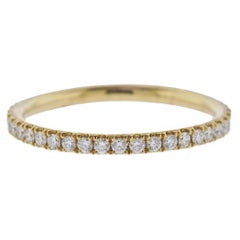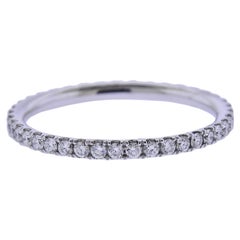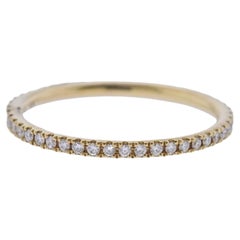Georg Jensen Aurora
20th Century Danish Contemporary Engagement Rings
Diamond, Gold, 18k Gold, Yellow Gold
Recent Sales
21st Century and Contemporary Danish Wedding Rings
Diamond, White Gold
21st Century and Contemporary Danish Wedding Rings
Diamond, Yellow Gold
21st Century and Contemporary Danish Wedding Rings
Diamond, Gold
21st Century and Contemporary Danish Wedding Rings
Diamond, White Gold
21st Century and Contemporary Danish Wedding Rings
Diamond, White Gold
21st Century and Contemporary Danish Wedding Rings
Diamond, Yellow Gold
21st Century and Contemporary Danish Wedding Rings
Diamond, Yellow Gold
21st Century and Contemporary Danish Wedding Rings
Diamond, White Gold
21st Century and Contemporary Danish Wedding Rings
Diamond, Yellow Gold
People Also Browsed
2010s Hong Kong Art Deco Cocktail Rings
Turquoise, Amethyst, Diamond, 14k Gold, Yellow Gold, Gold
21st Century and Contemporary Unknown Wedding Rings
Diamond, Gold, 18k Gold, Yellow Gold
21st Century and Contemporary American Contemporary Engagement Rings
Diamond, Platinum
Early 2000s Italian Evening Dresses and Gowns
2010s Choker Necklaces
Diamond, White Diamond, Platinum
1950s French Evening Dresses and Gowns
2010s American Contemporary Dome Rings
Diamond, Topaz, Blue Topaz, 18k Gold, Yellow Gold
Early 20th Century English Edwardian Engagement Rings
Diamond, Pearl, 18k Gold, Yellow Gold
21st Century and Contemporary Engagement Rings
Diamond, White Diamond, Gold
Vintage 1930s French Art Deco Charm Bracelets
Diamond, Emerald, Ruby, Sapphire, White Diamond, Blue Sapphire, Platinum
Vintage 1920s Art Deco Engagement Rings
Diamond, Platinum
2010s Contemporary Cocktail Rings
Diamond, Rubelite, Pink Sapphire, Tourmaline, Platinum
21st Century and Contemporary British Engagement Rings
Diamond, Platinum
21st Century and Contemporary Engagement Rings
Diamond, Gold, 18k Gold, White Gold
20th Century Cluster Rings
Diamond, 14k Gold, White Gold
Georg Jensen for sale on 1stDibs
For over a century, Georg Jensen has produced some of the finest objects in Scandinavian modern design, including silver tableware, serving pieces, home decor, jewelry and more, frequently partnering with leading artisans to expand its offerings and respond to shifting tastes. Known for minimal aesthetics that reference nature, the craftsmanship of this legendary Danish silverware firm has regularly married function with thoughtful and beautiful design.
Founder Georg Jensen (1866–1935) was born in the small town of Radvaad, Denmark, and began his training as a goldsmith at 14. After studying sculpture and then training with master silversmith Mogens Ballin, he established his own silver business in Copenhagen in 1904. By 1918, the company was successful enough to open a shop in Paris.
Jensen’s firm produced an incredibly vast range of silver objects, from serving dishes and barware to centerpieces and chandeliers. For his early work, which bore ornate floral details and other organic forms of Art Nouveau, Jensen looked to the splendors of the natural world. The 1905 Blossom teapot, for instance, was topped with a magnolia bud and deftly balanced on toad feet, while some of Jensen’s best-known flatware patterns included Lily of the Valley, introduced in 1913, and Acorn, which debuted in 1915.
Collaboration with outside designers, long before such partnerships were common in design, would lead to some of the company’s most popular and enduring work of the mid-century. Sigvard Bernadotte and Vivianna Torun Bülow-Hübe created collections, as did Henning Koppel, whose curvy 1952 Pregnant Duck pitcher is a Georg Jensen classic.
After evolving and expanding throughout the 20th century, Georg Jensen was acquired by Investcorp in 2012. Today, the company is a global luxury brand with more than 1,000 stores around the world. It continues to produce seductive new pieces, such as a tea service made with Marc Newson in 2015, as well as timeless heritage designs, including the relaunch in 2019 of the 1018 solid sterling-silver Tureen 270. In 2020, the firm introduced the Jardinière 1505. Sculptural and richly decorative, the never-before-realized showpiece is hand-hammered from sheets of the finest sterling silver and is based on a 1915 sketch from Jensen’s archives.
Find an exquisite collection of Georg Jensen serveware, ceramics, silver and glass today on 1stDibs.
Why Gold Shines in Jewelry Craftsmanship
Gold is the feel-good metal, the serotonin of jewelry. Wear vintage and antique gold necklaces, watches, gold bracelets or gold rings and you feel happy, you feel dressed, you feel, well, yourself.
Gold, especially yellow gold, with its rich patina and ancient pedigree going back thousands of years, is the steady standby, the well-mannered metal of choice. Any discussion of this lustrous metal comes down to a basic truth: Gold is elementary, my dear. Gold jewelry that couples the mystique of the metal with superb design and craftsmanship achieves the status of an enduring classic. Many luxury houses have given us some of our most treasured and lasting examples of gold jewelry over the years.
Since its founding, in 1837, Tiffany & Co. has built its reputation on its company jewelry as well as its coterie of boutique designers, which has included Jean Schlumberger, Donald Claflin, Angela Cummings and Elsa Peretti. There are numerous gold Tiffany classics worth citing. Some are accented with gemstones, but all stand out for their design and the workmanship displayed.
For the woman who prefers a minimalist look, the Tiffany & Co. twist bangle (thin, slightly ovoid) is stylishly simple. For Cummings devotees, signature pieces feature hard stone inlay, such as her pairs of gold ear clips inlaid with black jade (a play on the classic Chanel black and tan), or bangles whose design recalls ocean waves, with undulating lines of lapis lazuli and mother-of-pearl. And just about any design by the great Jean Schlumberger is by definition a classic.
Even had he eschewed stones and diamonds, Southern-born David Webb would be hailed for the vast arsenal of heavy gold jewelry he designed. Gold, usually hammered or textured in some manner, defines great David Webb jewelry. The self-taught jeweler made very au courant pieces while drawing inspiration from ancient and out-of-the-way sources — East meets West in the commanding gold necklaces made by Webb in the early 1970s. The same could be said for his endlessly varied gold cuffs.
In Europe, many houses have given us gold jewelry that sets the highest standard for excellence, pieces that were highly sought after when they were made and continue to be so.
Numerous designs from Cartier are homages to gold. There are the classic Trinity rings, necklaces and bracelets — trifectas of yellow, white and rose gold. As a testament to the power of love, consider the endurance of the Cartier Love bracelet.
Aldo Cipullo, Cartier’s top in-house designer from the late 1960s into the early ’70s, made history in 1969 with the Love bracelet. Cipullo frequently said that the Love bracelet was born of a sleepless night contemplating a love affair gone wrong and his realization that “the only remnants he possessed of the romance were memories.” He distilled the urge to keep a loved one close into a slim 18-karat gold bangle.
BVLGARI and its coin jewelry, gemme nummarie, hit the jackpot when the line launched in the 1960s. The line has been perennially popular. BVLGARI coin jewelry features ancient Greek and Roman coins embedded in striking gold mounts, usually hung on thick link necklaces of varying lengths. In the 1970s, BVLGARI introduced the Tubogas line, most often made in yellow gold. The Tubogas watches are classics, and then there is the Serpenti, the house's outstanding snake-themed watches and bracelets.
A collection called Monete that incorporated the gold coins is one of several iconic BVLGARI lines that debuted in the 1970s and ’80s, catering to a new generation of empowered women. Just as designers like Halston and Yves Saint Laurent were popularizing fuss-free ready-to-wear fashion for women on the go, BVLGARI offered jewels to be lived in.
Since Van Cleef & Arpels opened its Place Vendôme doors in 1906, collection after collection of jewelry classics have enchanted the public. As predominantly expressed in a honeycomb of gold, there is the Ludo watch and accessories, circa the 1920s, and the golden Zip necklace, 1951, whose ingenious transformation of the traditional zipper was originally proposed by the Duchess of Windsor. Van Cleef's Alhambra, with its Moroccan motif, was introduced in 1968 and from the start its popularity pivoted on royalty and celebrity status. It remains one of VCA’s most popular and collected styles.
Mention must be made of Buccellati, whose name is synonymous with gold so finely spun that it suggests tapestry. The house’s many gold bracelets, typically embellished with a few or many diamonds, signified taste and distinction and are always in favor on the secondary market. Other important mid-20th-century houses known for their gold-themed jewelry include Hermès and Ilias Lalaounis.
Find a stunning collection of vintage and antique gold jewelry on 1stDibs.
The Legacy of Diamond in Jewelry Design
Antique diamond rings, diamond tiaras and dazzling vintage diamond earrings are on the wish lists of every lover of fine jewelry. And diamonds and diamond jewelry are primarily associated with storybook engagements and red-carpet grand entrances — indeed, this ultra-cherished gemstone has a dramatic history on its hands.
From “A Diamond Is Forever” to “Diamonds Are a Girl’s Best Friend,” pop culture has ingrained in our minds that diamonds are the most desired, the most lasting and the most valuable gemstone. But what makes the diamond so special? Each stone — whether it’s rubies, sapphires or another stone — is unique and important in its own right. April babies might claim diamonds for themselves, but just about everyone wants this kind of sparkle in their lives!
There are several factors that set diamonds apart from other stones, and these points are important to our gem education.
Diamonds are minerals. They are made up of almost entirely of carbon (carbon comprises 99.95 percent; the remainder consists of various trace elements). Diamonds are the hardest gemstones, ranking number 10 on the Mohs Hardness Scale. Even its name, diamond, is rooted in the Greek adamas, or unconquerable. The only object that can scratch a diamond is another diamond. Diamonds are formed deep within the earth at very high temperatures (1,652–2,372 degrees Fahrenheit at depths between 90 and 120 miles beneath the earth’s surface) and are carried up by volcanic activity. Diamonds are quite rare, according to the Gemological Institute of America, and only 30 percent of all the diamonds mined in the world are gem quality.
In the 1950s, the Gemological Institute of America developed the 4Cs grading system to classify diamonds: clarity, color, cut and carat weight. Not all diamonds are created equal (there are diamonds, and then there are diamonds). The value of the diamond depends on the clarity (flawless diamonds are very rare but a diamond's value decreases if there are many blemishes or inclusions), color (the less color the higher the grade), cut (how the diamond’s facets catch the light, certain cuts of diamonds show off the stone better than others) and carat weight (the bigger, the better).
When you start shopping for a diamond engagement ring, always prioritize the cut, which plays the largest role in the diamond's beauty (taking the time to clean your diamond ring at least every six months or so plays a role in maintaining said beauty). And on 1stDibs, a range of buying guides can be found for those in the market for antique engagement rings, vintage engagement rings or Art Deco engagement rings.
Shop antique and vintage diamond rings, diamond necklaces and other extraordinary diamond jewelry on 1stDibs.
Finding the Right Wedding-rings for You
Find memorable jewelry to mark your special day — a collection of antique and vintage wedding rings is waiting for you on 1stDibs.
Wedding rings have symbolized love and devotion for centuries. The pharaohs of Ancient Egypt believed that wedding rings were symbols of eternity. The “ouroboros” rings of the era, which depicted a serpent swallowing its own tail, represented renewal and eternal life — a motif at the center of the Serpenti collection from Italian fine jewelry house Bulgari. Preferred materials in the production of wedding bands have changed over time; metals such as iron in early Rome replaced the wedding rings of bone and ivory that came before them. But the circle has always symbolized an unending pledge of love to one’s partner.
In the case of Cartier’s Trinity wedding ring, the “trinity knot” depicts unity and eternity. The legendary French brand’s minimalist Love wedding band is inseparable from immutable love, in that it joined the iconic Love bracelet, which initially could only be unlocked with its accompanying gold-vermeil screwdriver. Wedding rings designed by Tiffany & Co., one of the most prominent purveyors of luxury goods in the United States, have also long been popular for the newly betrothed.
Although wedding bands were traditionally given to women, the practice of men donning wedding rings became popular during the mid-20th century, as devoted husbands wanted to wear a symbol of their love when they shipped off to war. Wedding rings are often worn by both partners today, and men’s engagement rings are becoming more fashionable too (see our engagement ring buying guide).
On 1stDibs, shop diamond eternity bands, gold wedding rings, diamond wedding rings and other antique and vintage rings from the world’s best jewelry dealers.


